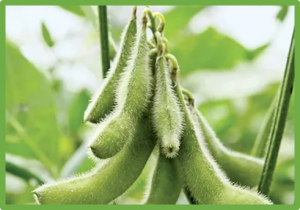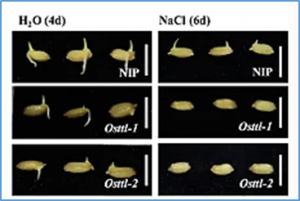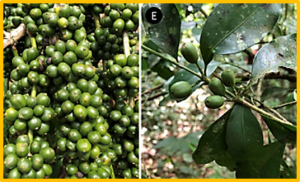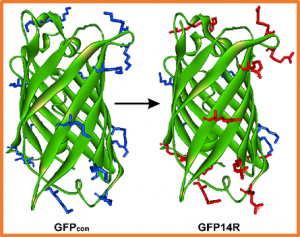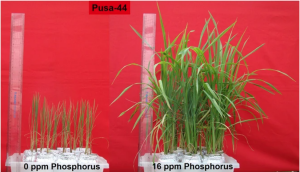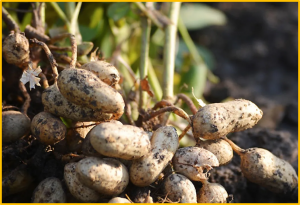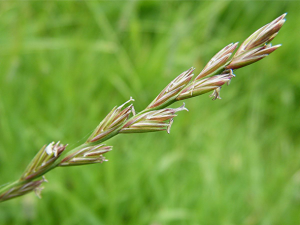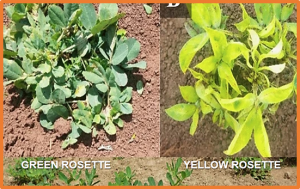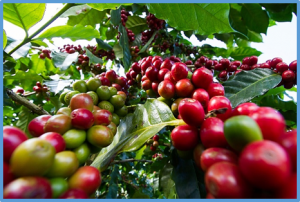Soybean cyst nematode (SCN, Heterodera glycines Ichinohe) is one of the most devastating pathogens for soybean production worldwide. The cultivar Zhongpin03-5373 (ZP), derived from SCN-resistant progenitor parents, Peking, PI 437654 and Huipizhi Heidou, is an elite line with high resistance to SCN race3. In the current study, a pedigree variation map was generated for ZP and its ten progenitors using 3,025,264 high-quality SNPs identified from an average of 16.2 × re-sequencing for each genome.
Rice is a salt-sensitive crop, and its seed germination determines subsequent seedling establishment and yields. In this study, 168 accessions were investigated for the genetic control of seed germination under salt stress based on the germination rate (GR), germination index (GI), time at which 50% germination was achieved (T50) and mean level (ML). Extensive natural variation in seed germination was observed among accessions under salt stress.
Uganda is a major global coffee exporter and home to key indigenous (wild) coffee resources. A comprehensive survey of Uganda's wild coffee species was undertaken more than 80 years ago (in 1938) and thus a contemporary evaluation is required, which is provided here. We enumerate four indigenous coffee species for Uganda: Coffea canephora, C. eugenioides, C. liberica (var. dewevrei) and C. neoleroyi. Based on ground point data from various sources, survey of natural forests, and literature reviews we summarise taxonomy, geographical distribution, ecology, conservation, and basic climate characteristics, for each species.
Previously, we developed a technique to introduce a superfolder green fluorescent protein (sGFP) fusion protein directly into plant cells using atmospheric-pressure plasma. In this study, we attempted genome editing using CRISPR/Cas9 (clustered regularly interspaced short palindromic repeats/CRISPR associated protein 9) system using this protein introduction technique. As an experimental system to evaluate genome editing, we utilized transgenic reporter plants carrying the reporter genes L-(I-SceI)-UC and sGFP-waxy-HPT. The L-(I-SceI)-UC system allowed the detection of successful genome editing by measuring the chemiluminescent signal observed upon re-functionalization of the luciferase (LUC) gene following genome editing.
Phosphorus (P)-deficiency is one of the major nutrient constraints for global rice production. P-deficiency tolerance in rice involves complex regulatory mechanisms. To gain insights into the proteins involved in phosphorus acquisition and use efficiency in rice, proteome analysis of a high-yielding rice cultivar Pusa-44 and its near-isogenic line (NIL)-23 harboring a major phosphorous uptake (Pup1) QTL, grown under control and P-starvation stress, was performed. Comparative proteome profiling of shoot and root tissues from the plants grown hydroponically with P (16 ppm, +P) or without P (0 ppm, -P) resulted in the identification of 681 and 567 differentially expressed proteins (DEPs) in shoot of Pusa-44 and NIL-23, respectively.
The compact (cp) phenotype in cucumber (Cucumis sativus L.) is an important plant architecture-related trait with a great potential for cucumber improvement. In this study, we conducted map-based cloning of the cp locus, identified and functionally characterized the candidate gene. Comparative microscopic analysis suggested that the short internode in the cp mutant is due to fewer cell numbers.
A genome-wide association study (GWAS) on component traits of LLS resistance in an eight-way multiparent advance generation intercross (MAGIC) population of groundnut in the field and in a light chamber (controlled conditions) was performed via an Affymetrix 48 K single-nucleotide polymorphism (SNP) ‘Axiom Arachis’ array. Multiparental populations with high-density genotyping enable the detection of novel alleles.
Perennial ryegrass breeding has focused on biomass yield, but expansion into a broader set of traits is needed to benefit livestock industries whilst also providing support for intellectual property protection of cultivars. Numerous breeding objectives can be targeted simultaneously with the development of sensor-based phenomics and genomic selection (GS). Of particular interest are nutritive value (NV), which has been difficult and expensive to measure using traditional phenotyping methods
Groundnut is cultivated in several African countries where it is a major source of food, feed and income. One of the major constraints to groundnut production in Africa is groundnut rosette disease (GRD), which is caused by a complex of three agents: groundnut rosette assistor luteovirus, groundnut rosette umbravirus and its satellite RNA. Despite several years of breeding for GRD resistance, the genetics of the disease is not fully understood.
Caffeine and trigonelline are the major bioactive compounds in coffee. Caffeine alone or combined with other coffee compounds shows hepatoprotective effects. However, molecular mechanisms underlying such hepatoprotective effects remain unclear. We therefore addressed molecular effects of caffeine and trigonelline on human hepatocytes using quantitative proteomics followed by bioinformatic analyses to obtain topological and functional significance. HepG2 cells were treated with 100 μM caffeine or trigonelline for 24-h and evaluated by quantitative proteomics using nanoLC-ESI-LTQ-Orbitrap MS/MS.


 Curently online :
Curently online :
 Total visitors :
Total visitors :
